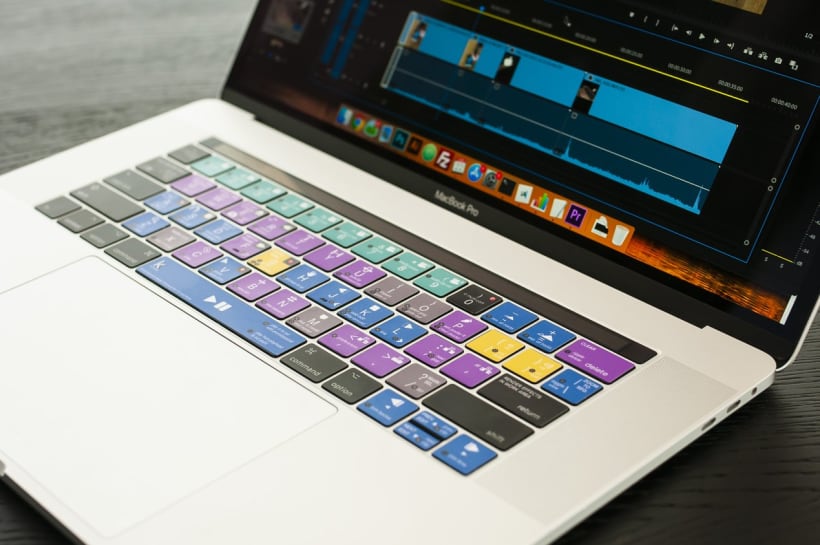

You can use the down arrow key to navigate to the next edit point and the up arrow key to navigate to the previous edit point. The Source Monitor is used to cue a frame for a clip, whereas the Program Monitor is used to cue the current frame for a sequence.Ĭlick the Go To In Point button to cue the current time to an In point.Ĭlick the Go To Out Point button to cue the current time to an Out point. Move both the in and out points at the same time, as in Move In and Out Points Together. Hold the In/Out Grip and drag it to a different place on the Source Monitor time ruler. Double-click on the clip to bring it up in the Source Monitor.Ĥ. See also Adobe Dimension (Step-by-Step Tutorial)ģ. In the Source Monitor, configure the In and Out points.Ģ. The In and Out points move in tandem, with the duration between them remaining constant.Ĭhanging the edit points in the Source Monitorġ. If you don’t drag the icon, you’ll merely cue the playhead. The cursor transforms to a hand when you click the In/Out Grip. Hold and drag the In/Out Grip to a different place on the Source Monitor time ruler to move the In and Out points together. The In/Out Grip is an icon that may be found in the center of the textured region between the In and Out points. Move Together, the in point and the out point Then, using the O key or the Mark Out button, make a mark. Then press the I key or click the Mark In button.ĭrag the playhead to the desired frame to mark an Out point. In the Source Monitor, configure the In and Out points.ĭrag the playhead to the desired frame to designate an In point. You may also use the Shift + 2 key to cycle through the clips in the Source Monitor. Select a clip from the drop-down list by clicking the three stacked lines next to the sequence name. A menu at the top of the Source Monitor displays recently loaded clips. You can, however, only watch one clip at a time. In the Source Monitor, you can import many clips at once. Open the Source Monitor and look at the most current footage. You can set, change, or remove In and Out points, trigger the playhead to any of these places, and preview the frames at their locations using tools and techniques.ĭouble-click a clip in the Project or Timeline panels to open it in the Source Monitor. The Source Monitor panel contains a variety of tools and methods for interacting with clips. Using the Source Monitor to work with clips It lets you go back to the previous zoom level. GO BACK TO THE PREVIOUS VERTICAL ZOOM LEVELĭouble-click the vertical zoom bar after returning to the normal zoom level. RETURN TO THE ORIGINAL VERTICAL ZOOM LEVELĭouble-click the vertical zoom bar to return to the default vertical zoom level. The waveform of one or more channels, as well as the decibel ruler, expands or contracts vertically.

Shift-drag either end of the vertical zoom bar to zoom in on all channels at once. It is located on the right side of the Source Monitor, close to the decibel ruler. To zoom in vertically, choose one of the following options:ĭrag either end of the vertical zoom bar to focus on a specific channel. In the Source Monitor, drag either end of the zoom scrolling bar that runs below the time bar to zoom in horizontally.Īll channels’ waveforms and the time bar increase and compress horizontally.ģ. To open a clip in the Source Monitor, double-click it in the timeline panel.Ģ. In the Source Monitor, you can zoom in on an audio waveform to better identify markers, In points, and Out points.ġ. In the Source Monitor, you can zoom in or out on an audio waveform. Scrubbing can be disabled by going to Edit > Preferences > Audio and unchecking the option Play audio when scrubbing. To move along or scrub the footage, click across it, forward or backward. When you click the audio clip, the playhead displays. It’s a quick way to get about in an audio recording.ĭouble-click a clip in the timeline panel to open it in the Source Monitor. Scrubbing is the process of dragging the playhead across a portion of an audio waveform. Select Show Audio Waveform to display audio as waveforms in the timeline. To change the style of the audio track, use the wrench tool on the timeline panel and select Timeline Display Settings. When you open a clip with several audio channels in the Source Monitor, you can see the audio waveforms. When you open an audio clip in the Source Monitor, audio waveforms show immediately. You may view audio waveforms, scrub audio waveforms, and zoom in and out of them. In the Source Monitor, you can work with audio clips as well as audio from audio and video clips.
#ADOBE PREMIERE KEYBOARD SHORTCUTS RIPPLE DELETE HOW TO#
How To Cut In Adobe Premiere Using the Source Monitor to work with audio clips


 0 kommentar(er)
0 kommentar(er)
